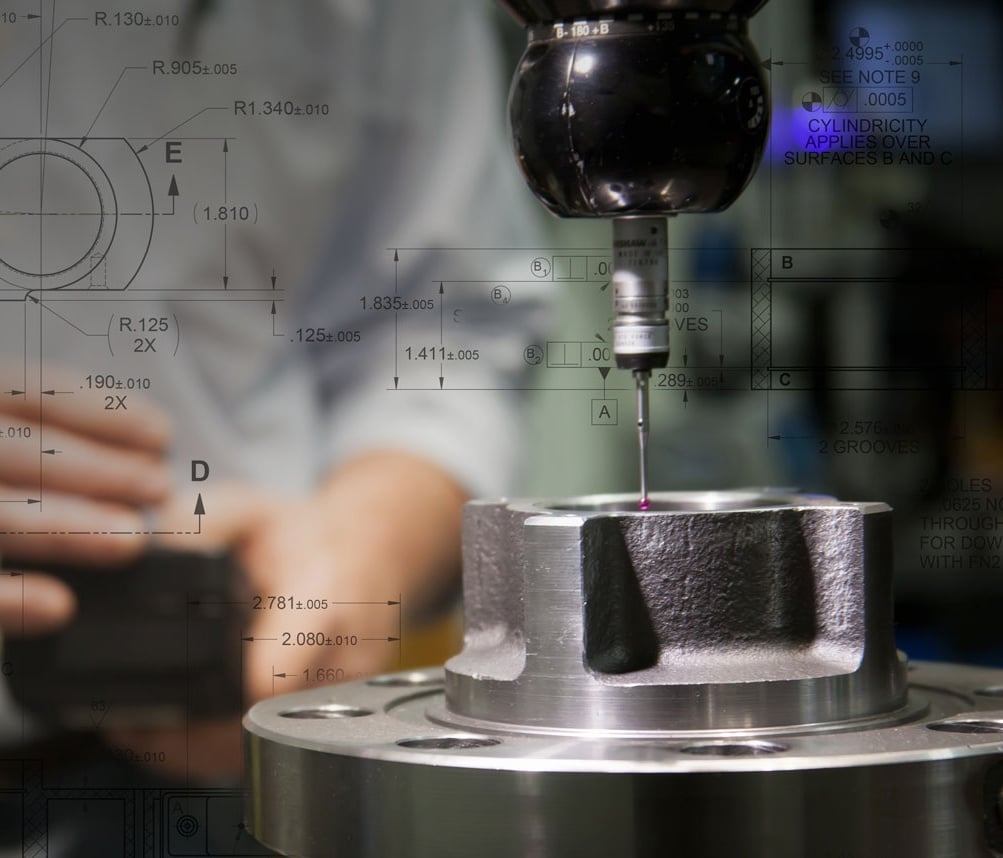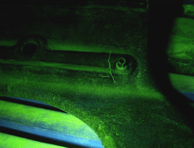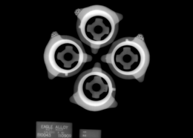Designing Cast Products: High-Tech Inspection for High-Quality Parts

During the Eagle Group's product design process, sample runs of new cast products are subject to some of the most rigorous inspection processes available. The inspection methods we use prove to our customers that their parts will conform to specified tolerances and be free of defects. From magnetic particle inspection to laser scanning, we make sure that every new product passes a gamut of tests before it ships to the customer.
The Eagle Group regularly makes use of robust inspection technology to discover and diagnose any flaws or defects present in metal parts. In some cases, we use these methods to reverse engineer an existing part brought to us with defects. In other cases, we've pinpointed flaws in the initial design that lead to downstream manufacturing challenges.
 The Eagle Group takes pride in quality, and that means taking inspection very seriously. Our foundries utilize cutting edge quality control methods throughout the production process to guarantee parts that meet or exceed expectations. Going even further, the Eagle Group's CNC machine house, Eagle CNC Technologies, really shines in the quality control department. With inspection capabilities at the forefront of measuring technology, Eagle CNC is able to diagnose performance issues, determine the cause of any defects or even suggest changes to the manufacturing process.
The Eagle Group takes pride in quality, and that means taking inspection very seriously. Our foundries utilize cutting edge quality control methods throughout the production process to guarantee parts that meet or exceed expectations. Going even further, the Eagle Group's CNC machine house, Eagle CNC Technologies, really shines in the quality control department. With inspection capabilities at the forefront of measuring technology, Eagle CNC is able to diagnose performance issues, determine the cause of any defects or even suggest changes to the manufacturing process.
Inspection varies from part to part, depending on the shape and size as well as the material composition. If flaws are suspected, that also informs the inspection strategy. The following techniques comprise a sample of quality control methods used by Eagle Group foundries and Eagle CNC Technologies.
Hand-tool measurement
Manual measurements are taken with micrometers, calipers, height gages, pins, flat plates and other tools.
- Works well on simple products with low levels of critical areas
- Advantages include quick setup and low cost of tools
- Drawbacks include time involved in measurement, lack of repeatability and difficulty measuring curved surfaces
Coordinate Measuring Machines (CMM)
A family of measuring equipment ranging from manually configured measuring stations to portable laser scanners, allowing for precise measurement with reduced rates of human error.
Eagle CNC Technologies operates manual CMMs, CNC-controlled CMMs and a portable laser arm. Each piece of equipment has different advantages and disadvantages, ranging from setup time to repeatability and accuracy. With current equipment, Eagle CNC can measure radial or linear tolerances of +/- .0003" and surface finishes down to 32ra.
For a more detailed look at CMMs check out our post, "CNC Metrology: What Can a CMM Measure?"
Portable Laser Scanners
Technically a type of CMM, portable laser scanners aid in both inspection and reverse engineering.
- Work well on intricate products with complex, curved surfaces
- Advantages include time savings, ease of setup, ability to accurately measure curves, and ability to overlay coordinate meshes onto nominal 3D files
- Disadvantages include cost of equipment and need for training on advanced software
Both Eagle CNC, the Eagle Group's machine house, and Eagle Alloy, the Eagle Group's shell casting foundry, have in-house laser scanning capabilities. For more information on how Eagle Alloy uses their handheld laser scanner, check out this blog post.
Magnetic Particle Inspection (MPI)
 Magnetizing parts and applying a coat of pigmented iron particles to reveal surface defects not visible to the naked eye.
Magnetizing parts and applying a coat of pigmented iron particles to reveal surface defects not visible to the naked eye.
- Works on parts made of ferromagnetic materials (iron, nickel, cobalt & alloys including steel)
- Advantages include non-destructivity and quick feedback after setup
- Disadvantages include inability to detect interior flaws, and cost of MPI equipment
X-Ray Inspection
 Inspecting products for internal defects like porosities, thermal cracking or inclusions by exposing the products to radiation (X-Rays).
Inspecting products for internal defects like porosities, thermal cracking or inclusions by exposing the products to radiation (X-Rays).
- Works well on parts with intricate inner cavities and walls of varying thickness
- Advantages include non-destructivity and the ability to view characteristics invisible to most other equipment
- Disadvantages include safety hazards, large amount of time required for setup and process, and high degree of skill required
An "All of the Above" Inspection Approach
In order to benefit from the advantages of all inspection methods, the Eagle Group makes it a standard practice to run each sample batch through every available test. Even if porosities or thermal cracking are not suspected, the samples get X-rayed; after operators have manually confirmed critical areas, they'll still use a laser scanner to create a digital mesh of each sample part.
By carrying out all these tests, responsible manufacturers like the Eagle Group make sure that they find all defects before going into full production. If any defects are discovered, this comprehensive inspection process ensures that engineers will be able to diagnose and fix the problem.
Want to learn more about working with the Eagle Group?
Start by taking a look at our Quick Reference Guide, with tolerances and design tips for everything we do:
Tags: Metrology, Inspection, Product Development






